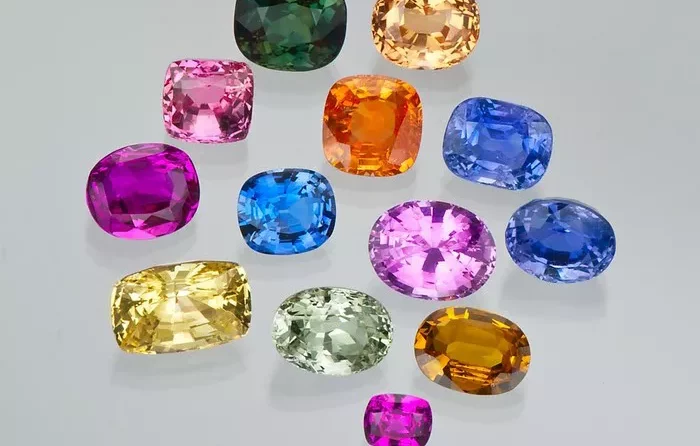Crystals have fascinated humanity for millennia, revered for their purported mystical properties and perceived ability to influence various aspects of life, including luck. From ancient civilizations to modern spiritual practices, crystals have been hailed as conduits of positive energy, with each type believed to possess unique characteristics and powers. Among the myriad of crystals purported to bring luck, determining the luckiest one is a quest that captivates both the curious and the spiritual seeker. This essay embarks on an exploration of the enigmatic realm of crystals, delving into their history, cultural significance, and purported effects on luck, ultimately aiming to unravel the mystery of the luckiest crystal.
Historical and Cultural Perspectives
The fascination with crystals transcends cultures and epochs, with their significance deeply embedded in human history. Ancient civilizations such as the Egyptians, Greeks, Romans, and Chinese revered crystals for their perceived mystical properties. Crystals were used in rituals, ceremonies, and as adornments, believed to ward off evil spirits, bring protection, and attract prosperity.
In ancient Egypt, for instance, crystals like lapis lazuli were prized for their deep blue hue, symbolizing the heavens and the divine. They were often used in burial rites to guide the soul to the afterlife. Similarly, the Greeks attributed various powers to different crystals; for instance, amethyst was thought to prevent drunkenness and promote clarity of mind.
In Chinese culture, jade holds profound significance, symbolizing purity, wisdom, and prosperity. Jade has been revered for thousands of years and is often associated with luck, particularly in matters of wealth and health. Chinese emperors adorned themselves with jade artifacts, believing them to confer blessings and protection.
Across continents and civilizations, crystals have played pivotal roles in shaping cultural beliefs and practices, reflecting humanity’s enduring fascination with these natural wonders.
Types of Lucky Crystals
The world of crystals is vast and diverse, with each type believed to possess distinct properties and powers. While opinions vary among practitioners and enthusiasts, certain crystals are commonly associated with luck and fortune. Among them, four stand out:
Clear Quartz: Known as the “Master Healer,” clear quartz is revered for its ability to amplify energy and intentions. It is believed to clear negative energy, enhance clarity of thought, and promote harmony and balance. In the realm of luck, clear quartz is often regarded as a versatile crystal that can attract prosperity, success, and positive outcomes in various endeavors.
Citrine: Dubbed the “Merchant’s Stone” for its association with wealth and abundance, citrine is prized for its golden hue and radiant energy. It is believed to stimulate creativity, enhance confidence, and attract opportunities for financial prosperity. Citrine is often placed in cash registers or wealth corners to invite good fortune and success in business ventures.
Jade: A symbol of purity and prosperity in Chinese culture, jade has been revered for centuries for its mystical properties. It is believed to bring harmony, balance, and good luck to its wearer, particularly in matters of wealth and longevity. Jade jewelry, sculptures, and artifacts are cherished heirlooms passed down through generations, believed to bestow blessings and protection upon their owners.
Pyrite: Known as “Fool’s Gold” for its resemblance to the precious metal, pyrite is associated with abundance, prosperity, and good fortune. It is believed to possess a strong protective energy that shields against negativity and misfortune. Pyrite is often used in feng shui to attract wealth and enhance financial success, making it a popular choice for prosperity grids and talismans.
These four crystals represent a sampling of the diverse array of stones believed to bring luck and fortune to those who possess them. While their efficacy is subject to personal belief and interpretation, their enduring popularity speaks to the timeless allure of crystals as agents of positive energy and transformation.
Scientific Perspectives
While the metaphysical properties of crystals have been extolled for centuries, scientific inquiry into their purported effects on luck remains limited. Skeptics argue that any perceived benefits of crystals are merely placebo effects or the result of subjective interpretation.
From a scientific standpoint, crystals are admired for their unique molecular structures and electromagnetic properties. Quartz, for example, exhibits piezoelectricity, meaning it can generate an electrical charge when subjected to mechanical stress. This property has practical applications in various technologies, including watches, computers, and telecommunications.
However, scientific research on the metaphysical properties of crystals, including their supposed ability to influence luck, is scant. Studies examining the efficacy of crystal healing practices have yielded mixed results, with many attributing any perceived benefits to the placebo effect rather than any inherent properties of the crystals themselves.
Despite the lack of empirical evidence, proponents of crystal healing maintain that the energetic vibrations emitted by crystals can interact with the body’s subtle energy systems, promoting physical, emotional, and spiritual well-being. They argue that while science may not yet fully understand the mechanisms behind crystal healing, the experiential evidence of its efficacy is compelling.
Conclusion
The quest to determine the luckiest crystal is a journey fraught with mystery, symbolism, and personal interpretation. From ancient civilizations to modern-day practitioners, crystals have captivated humanity with their beauty, energy, and purported metaphysical properties.
While cultural beliefs and anecdotal evidence abound regarding the luck-enhancing properties of certain crystals, scientific validation remains elusive. Skeptics dismiss crystal healing as pseudoscience, attributing any perceived benefits to placebo effects or subjective interpretation.
Despite the skepticism, the allure of crystals persists, beckoning believers and skeptics alike to explore their mystical realms. Whether as talismans of luck, tools for self-discovery, or objects of beauty, crystals continue to fascinate and inspire, inviting us to ponder the mysteries of the universe and our place within it. Ultimately, the luckiest crystal may be the one that resonates most deeply with the individual, serving as a conduit for their intentions, beliefs, and aspirations.


